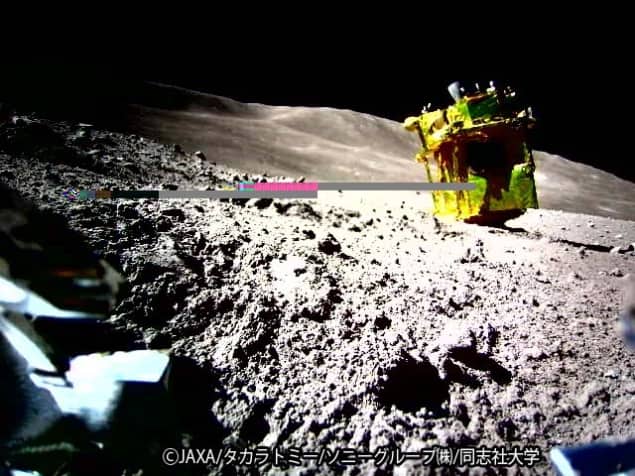
The Japanese Space Agency, JAXA, has today announced a possible explanation for why its lunar lander is unable to generate power from its solar panels – the craft landed upside down.
While the Smart Lander for Investigating Moon (SLIM) successfully landed softly on the Moon on 20 January, engineers soon discovered that the craft was unable to generate power. It was then put in safe mode until further investigations were carried out. Today, JAXA released an image taken by a small lunar rover, ejected by the craft before it landed, which shows SLIM on its nose.
SLIM was launched on 7 September 2023 from the Tanegashima Space Center on the island of Tanegashima aboard a H-IIA Launch Vehicle. It took off alongside the X-ray Imaging and Spectroscopy Mission.
One of SLIM’s main objectives is to demonstrate high-precision “vision-based” landing to put the craft down within 100 m of the target site. This is compared to typical target lunar-landing sites that can stretch for several kilometres.
To do so, SLIM has an onboard laser-range finder, a camera and a radar. They combined to measure the altitude, imaged the lunar surface, as well as measured the altitude and speed of the craft as it descended towards the surface.
JAXA says that just before landing, SLIM lost thrust from one of the two main engines. Yet the craft still managed to land about 55 m east of the original landing site, with the craft touching down under 10 m of the landing site chosen by the craft’s real-time navigation system. “It is reasonable to mention that the technology demonstration of pinpoint landing…has been achieved,” a JAXA statement says.
Nose dive
Shortly before landing, SLIM released two small demonstrator lunar rovers. A small baseball-sized robot dubbed Lunar Excursion Vehicle-2 (LEV-2) as well as LEV-1, a lunar rover with a mass of 2.1 kg, which moves via a hopping mechanism.
JAXA says that LEV-1 was able to move on the lunar surface, but was unable to send images. The rover has now completed its activities and is in standby mode. Private Japanese lunar craft Hakuto-R crashes on landing
LEV-2, however, managed to take an image of SLIM and transmit it to Earth via LEV-1. The picture, released today, shows SLIM upside down on its nose. JAXA also released an image of the lunar surface taken by SLIM’s multi-band camera.
JAXA says that as a result of this orientation, SLIM’s solar panels are facing west, suggesting that power generation could be possible as “sunlight illumination improves over time”. The space agency says that it will now continue to “acquire further technical and scientific data” from the craft.
As a result of the soft landing, Japan became the fifth nation to successfully land a craft on the Moon, following the US, Soviet Union, China and India.



